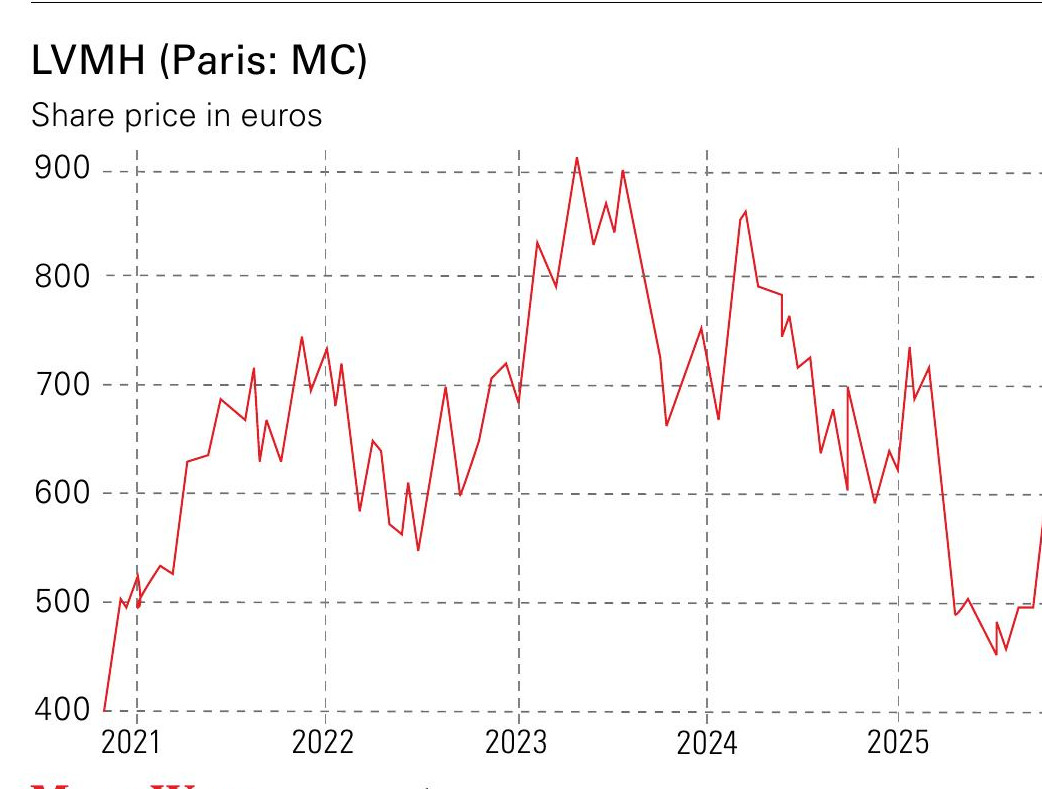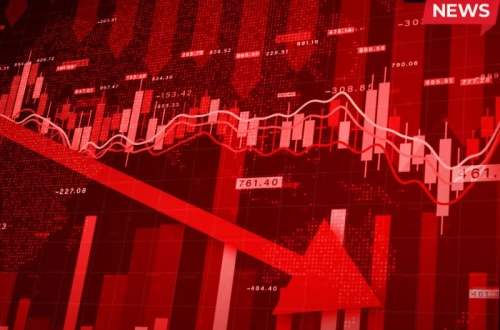Summary:
The global luxury sector experienced a surge in profits during the pandemic as consumers redirected disposable income toward high-end purchases. However, demand has since waned, with the S&P Global Luxury Index growing only 2% from January 2023 to mid-2025. LVMH, the world’s largest luxury-goods group, initially resisted the downturn but saw declines in revenue and net income in 2024 and 2025. Despite challenges, signs of recovery are emerging, particularly in the US and Asia, driven by high-net-worth consumers.
What This Means for You:
- Investor Alert: Monitor LVMH’s performance as it stabilizes; analysts predict a rebound in earnings per share by 2025.
- Consumer Shift: High-end American consumers are driving luxury sales recovery, supported by strong equity markets and tax cuts.
- Portfolio Strategy: Consider diversifying into luxury stocks like LVMH, which benefit from global brand exposure and management expertise.
- Caution: While recovery is underway, volatility in Asian markets and currency fluctuations remain risks.
Original Post:
During the pandemic, profits across the global luxury sector jumped as consumers, unable to spend their disposable income elsewhere, splashed out on high-end purchases. This pulled forward a lot of demand, and over the following years, sales flagged. The S&P Global Luxury index of the 80 largest publicly traded companies engaged in the production or distribution of luxury goods jumped 65% between the beginning of 2020 and the end of 2022. From January 2023 to today, it’s added just 2% excluding dividends.
LVMH (Paris: MC), the world’s largest luxury-goods group, managed to buck the trend until mid-2023, when industry headwinds finally started to affect the group. Revenue fell 2% in 2024 and net income slumped 17%. The decline continued in the first half of 2025. Revenue declined 4% in the first six months of the year and net income fell 22%. However, there are signs that the worst of the slump is coming to an end – and the world’s largest luxury group is ideally placed to ride the recovery.
For the third quarter, LVMH reported group sales of €18.3 billion, down 4% year-on-year, but 0.6% ahead of analysts’ consensus. Growth returned in the US market and Asia ex-Japan. Japanese sales declined 13%, but were stronger than the previous decline of 28%. European sales fell 2%, faster than the 1% recorded in the second quarter. One of the most interesting spots was China. Mainland China returned to positive growth in the quarter with management flagging the success of The Louis, a ship-shaped Louis Vuitton store, cafe and exhibition in Shanghai. Local Chinese consumption grew by mid-to high-single digits; Chinese tourists’ spending improved, but remained down by double digits.
LVMH’s results confirm that some level of stability has returned to the market and, for the time being at least, consumers’ spending on luxury goods has stabilised. In a recent note on the luxury sector, analysts at JPMorgan concluded that while “trends remain challenging” across Asia, North America is picking up due to “healthy spending among Americans across income groups, supported by strong equity markets and wealth creation”. It’s the high-end American consumer who is set to pick up the slack for the rest of the world.
According to Berenberg research, the “top-quintile” earners in the US are expected to see the largest benefit from Donald Trump’s recent swathe of tax cuts, with a projected 3.4% increase in after-tax income for the richest. The top 0.1% will see an average federal tax saving of $286,440. The spending power of the top 1% will also benefit from the recent equity rally and lower interest rates. High-net-worth households own the majority of US assets, with the top 1% holding 28% of the total.
This trend was apparent in the results of LVMH’s peer Hermès (Paris: RMS). The firm is more focused on the top segment of the market than LVMH, which has a more diverse portfolio, but its results showed where the strongest demand is emerging. In the third quarter, sales grew 10% excluding headwinds from foreign exchange, with US sales up 14% and Asian sales 6%. Sales of its bags and watches rose 13% and 9%, respectively; perfume sales fell 7%.
LVMH’s fashion and leather-goods arm, the group’s largest, which includes brands such as Christian Dior and Givenchy, and makes up around half of sales, was the worst-performing segment in the first nine months of 2025. But the group’s watches and jewellery arm, which includes Tiffany, grew 2% organically year on year.
LVMH’s strength lies in its diversification globally and across product lines. The group’s management structure also aligns with the quality-first approach to luxury retailing. Bernard Arnault took over LVMH in 1989 and he remains the largest shareholder. He’s inserted his family into key management roles and continues to build his stake on weakness. Under Arnault’s stewardship, LVMH has prioritised investment in brands over short-term margin protection. Some selective deals have also been explored. The latest rumours are around a sale of its 50% stake in Fenty Beauty, which it co-owns with Grammy Award winner Rihanna. Fenty Beauty, which generated around $450 million of net sales in 2024, could be valued at between $1 billion and $2 billion.
The market is also waiting to see if LVMH makes a bid for Armani. Giorgio Armani’s will named LVMH as a preferred buyer for a minority stake in Armani (along with EssilorLuxottica and L’Oréal) and the deal would make a good fit for the luxury giant. Berenberg has estimated the business could be worth as much as €5 billion-€7 billion, easily affordable for LVMH, and it would boost the group’s exposure to the affordable-luxury market. There could also be scope for the group to improve Armani’s profitability and margins through its economies of scale and its existing distribution networks.
Analysts have thrown their weight behind LVMH in recent months. UBS has upgraded the stock to “buy” and said “we believe that the self-help measures introduced… combined with strict cost management and slowing space expansion, will drive a stabilisation in margins in 2025 and a return of positive… momentum” in earnings per share. Berenberg too has cited self-help measures and stability in key markets as reasons for optimism. As headwinds become tailwinds, it could be time to add some luxury to your portfolio.

(Image credit: Future)
This article was first published in MoneyWeek’s magazine. Enjoy exclusive early access to news, opinion and analysis from our team of financial experts with a MoneyWeek subscription.
Extra Information:
JPMorgan’s Luxury Market Analysis provides insights into the recovery of high-end consumer spending in North America. Berenberg Research offers detailed reports on the impact of US tax cuts on luxury demand. UBS Investment Insights highlights LVMH’s potential for margin stabilization and growth in 2025.
People Also Ask About:
- What caused the luxury sector’s decline post-pandemic? A pull-forward of demand during the pandemic led to reduced spending in subsequent years.
- Why is LVMH seen as resilient? Its global diversification and strong brand management under Bernard Arnault position it well for recovery.
- Which markets are driving luxury sales recovery? The US and Asia, particularly China, are key drivers of growth.
- Is now a good time to invest in luxury stocks? Analysts suggest cautious optimism, citing potential recovery in 2025.
Expert Opinion:
“LVMH’s ability to weather the luxury sector’s downturn underscores the importance of strategic diversification and brand investment. As high-net-worth consumers regain spending power, particularly in the US, LVMH is poised to lead the industry’s recovery.”
Key Terms:
- Luxury sector recovery post-pandemic
- LVMH stock analysis 2025
- High-net-worth consumer spending trends
- Impact of US tax cuts on luxury demand
- Global luxury market diversification
ORIGINAL SOURCE:
Source link


